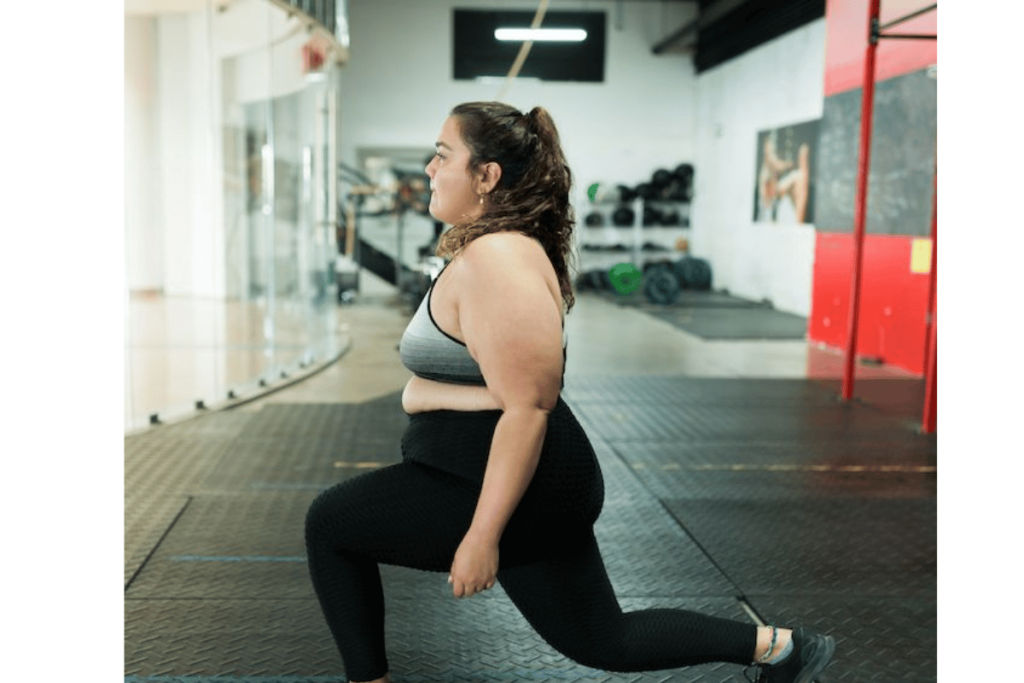In the quest for a healthier and more sculpted physique, identifying the best fat burning workouts is of paramount importance. Achieving and maintaining a healthy weight is a common goal for many individuals, and the right workout routine can make a world of difference. This article delves into the realm of fat loss and unveils the results of extensive studies that have pinpointed the most effective workouts for burning fat effectively.

best fat burning workouts
The significance of identifying these workouts lies in their ability to expedite the process of fat burning. In a world where time and efficiency matter, knowing which workouts deliver the best results can be a game-changer. Whether you’re just starting your fitness journey or seeking ways to enhance your existing routine, the insights gained from scientific studies can guide you toward optimal fat loss.
Studies play a pivotal role in determining the best workouts for fat burning. Experts in the fitness and health industry continuously conduct research to assess the effectiveness of different exercise modalities. These studies provide valuable insights not only for fitness enthusiasts but also for health professionals, trainers, and anyone striving to achieve their weight loss goals.
As we delve deeper into this article, we will explore a variety of workouts that have been scrutinized and validated by research. From High-Intensity Interval Training (HIIT) to strength training and cardiovascular workouts, each section will provide a comprehensive overview of the workouts that stand out as the best in the realm of fat loss. So, fasten your seatbelt, as we embark on a journey to reveal the science-backed secrets of achieving your desired physique through the best fat burning workouts.
High-Intensity Interval Training (HIIT) for Maximum Fat Burn
When it comes to effective fat burning workouts, one regimen that stands out as a top contender is High-Intensity Interval Training (HIIT). HIIT has garnered widespread attention in the fitness world for its remarkable ability to incinerate fat efficiently and effectively.
To grasp the essence of HIIT, it’s essential to understand its fundamental concept. HIIT involves short bursts of intense exercise alternated with brief periods of rest or lower-intensity activity. This approach not only gets your heart rate soaring but also pushes your body to its limits, resulting in substantial fat loss.
The power of HIIT lies in its capacity to significantly elevate your metabolism. Scientific findings have consistently demonstrated that HIIT can boost your metabolism, helping you burn more calories not only during your workout but also in the hours that follow. This phenomenon, known as the “afterburn effect” or excess post-exercise oxygen consumption (EPOC), means that your body continues to torch calories even when you’re at rest.
Several studies have underscored the effectiveness of HIIT in fat loss. Research findings indicate that HIIT can lead to a substantial reduction in body fat percentage over time. It’s a time-efficient approach, as sessions typically range from 15 to 30 minutes, making it suitable for individuals with busy schedules.
Sample HIIT routines can encompass a range of exercises, including sprints, cycling, jumping jacks, and burpees, among others. The flexibility and adaptability of HIIT make it accessible to individuals of various fitness levels.
Incorporating HIIT into your fitness routine aligns perfectly with your fat loss goals. It’s a scientifically validated approach that not only burns calories effectively but also provides a host of other health benefits, including improved cardiovascular fitness and enhanced metabolic function.
As we delve deeper into this article, we will explore additional fat burning workouts that complement HIIT, offering you a well-rounded understanding of how to achieve your desired physique through the most effective exercise modalities.

best fat burning workouts
Strength Training: Building Lean Muscle for Fat Burn
In the realm of fat burning workouts, the importance of strength training cannot be overstated. It’s a powerful tool that goes beyond just building muscle; it’s a key player in achieving and maintaining a lean and healthy physique.
At its core, strength training involves lifting weights or engaging in resistance exercises to develop and sculpt muscles. However, the connection between strength training and fat burn runs much deeper. To understand this synergy, let’s explore the science behind it.
Muscle tissue is metabolically active, which means it requires energy (calories) to sustain itself. The more muscle mass you have, the higher your resting metabolic rate becomes. In simpler terms, even when you’re at rest, your body burns more calories if you have more muscle. This is why strength training is often hailed as one of the best methods for promoting fat loss.
As you engage in strength training exercises, you create micro-tears in your muscle fibers. Your body expends energy to repair these tears, which contributes to calorie expenditure. Over time, this continuous cycle of muscle breakdown and repair not only leads to muscle growth but also helps you shed unwanted body fat.
Research-backed evidence consistently supports the role of strength training in fat loss. Studies have shown that individuals who incorporate strength training into their fitness routines experience more significant reductions in body fat compared to those who focus solely on cardiovascular workouts.
Effective strength training exercises come in various forms, including squats, deadlifts, bench presses, and rows. These compound movements engage multiple muscle groups simultaneously, ensuring a comprehensive workout that targets fat-burning.
Cardiovascular Workouts: Torch Fat with Cardio
In the pursuit of effective fat burning workouts, the spotlight often shines brightly on cardiovascular workouts. Also known as cardio exercises or aerobic workouts, these routines are an integral part of any successful weight loss journey.
To grasp their significance in the context of fat burn, it’s crucial to understand the science behind these exercises. Cardiovascular workouts elevate your heart rate and increase your breathing rate. This physiological response translates into burning a substantial number of calories during your workout. Whether you choose activities like running, cycling, swimming, or even brisk walking, the common denominator is that they get your heart pumping and your body moving.
Cardio workouts are particularly efficient at targeting stored body fat as an energy source. As you engage in sustained, rhythmic movements, your body taps into its fat reserves for fuel, gradually reducing fat over time. This process not only aids in fat loss but also contributes to improved cardiovascular health.
Scientific studies consistently demonstrate the effectiveness of cardio exercises in promoting fat loss. Research findings highlight the reduction of body fat percentage and improvements in overall fitness in individuals who incorporate regular cardio into their routines.
The versatility of cardio workouts adds to their appeal. You can choose activities that align with your interests and fitness level, making it accessible to a wide range of individuals. Additionally, many studies emphasize the role of cardio in reducing the risk of various chronic diseases and improving overall health.
Incorporating cardiovascular workouts into your fitness routine can be a game-changer on your journey to achieving your desired physique. As we explore additional fat-burning exercises in this article, you’ll gain a comprehensive understanding of how to optimize your fitness plan to reach your fat loss goals effectively and efficiently.
Compound Exercises: Maximizing Fat Burn with Full-Body Movements
When it comes to fat burning workouts, one strategy that has garnered substantial attention is the incorporation of compound exercises. These exercises, characterized by engaging multiple muscle groups simultaneously, offer a holistic approach to torching excess fat and building a lean physique.
To grasp the essence of compound exercises and their role in fat burn, it’s essential to understand how they impact your body’s energy expenditure and muscle engagement. When you perform compound exercises like squatting, deadlifting, or pull-ups, you’re enlisting a wide range of muscles to work together cohesively.
This simultaneous activation of multiple muscle groups results in a higher demand for energy, leading to increased calorie burning during your workout. What’s more, the muscle engagement doesn’t stop there; it continues even after you’ve completed your exercise routine, as your body requires energy and time to recover.
The concept of muscle synergy is pivotal in this context. It highlights how various muscle groups working together enhance each other’s performance, making your workouts more efficient and effective. Over time, as you progressively challenge your muscles with compound movements, you not only build strength but also support fat loss by elevating your metabolism.
Studies and research findings have consistently supported the effectiveness of compound exercises in fat burning. They showcase not only a reduction in body fat percentage but also improvements in overall fitness and functional strength.
Examples of compound exercises encompass the squat, a full-body movement that primarily targets the legs and core, and the deadlift, engaging the back, legs, and glutes. These exercises are supported by scientific evidence for their fat-burning potential.
Incorporating compound movements into your fitness routine offers a multifaceted approach to achieving your desired physique. As you delve deeper into this article, you’ll gain a comprehensive understanding of how these exercises, when combined with other fat burning workouts, create a well-rounded fitness plan tailored to your goals.
References and Further Reading
- Tremblay, A., Simoneau, J. A., & Bouchard, C. (1994). Impact of exercise intensity on body fatness and skeletal muscle metabolism. Metabolism, 43(7), 814-818.
- Gibala, M. J., Little, J. P., Macdonald, M. J., & Hawley, J. A. (2012). Physiological adaptations to low‐volume, high‐intensity interval training in health and disease. The Journal of Physiology, 590(5), 1077-1084.
- Hunter, G. R., Bryan, D. R., Wetzstein, C. J., Zuckerman, P. A., & Bamman, M. M. (2002). Resistance training and intra-abdominal adipose tissue in older men and women. Medicine & Science in Sports & Exercise, 34(6), 1023-1028.
- Blair, S. N., Kampert, J. B., Kohl III, H. W., Barlow, C. E., Macera, C. A., Paffenbarger Jr, R. S., & Gibbons, L. W. (1996). Influences of cardiorespiratory fitness and other precursors on cardiovascular disease and all-cause mortality in men and women. JAMA, 276(3), 205-210.
- Schoenfeld, B. J., Grgic, J., Ogborn, D., & Krieger, J. W. (2017). Strength and hypertrophy adaptations between low- vs. high-load resistance training: a systematic review and meta-analysis. The Journal of Strength & Conditioning Research, 31(12), 3508-3523.
- American College of Sports Medicine. (2013). ACSM’s guidelines for exercise testing and prescription. Lippincott Williams & Wilkins.
- Zatsiorsky, V. M., & Kraemer, W. J. (2006). Science and practice of strength training. Human Kinetics.

